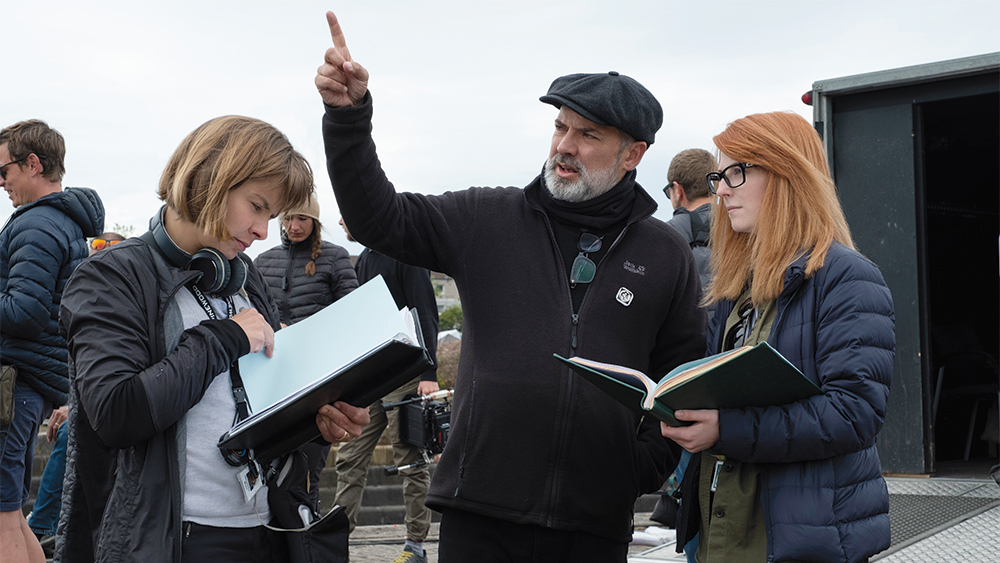Scripter Krysty Wilson-Cairns Broke Rules With ‘1917’
By Thelma Adams
LOS ANGELES (Variety.com) – Taut, tense and fluid, the Oscar-nominated script for “1917” reflects a collaboration of old guard and new — Oscar-winning writer-director Sam Mendes and debut feature writer Krysty Wilson-Cairns. They structured the WWI epic as a single shot tracking two young British soldiers, lance corporals Blake (Dean-Charles Chapman) and Schofield (George MacKay). Their mission? Cross no-man’s land to save 1,600 British troops from walking into a German trap. Variety reached outspoken Glaswegian Wilson-Cairns by phone to discuss reinventing the war movie.
“I don’t think we reinvented the script,” says Wilson-Cairns, who previously collaborated with Mendes on TV’s “Penny Dreadful.” “Our m.o. was to make this film feel like 110 minutes in another person’s life. We fused film and theater, first-hand accounts and photography of the time. We didn’t redefine the genre, but we offered a different angle on it.”
Wilson-Cairns acknowledges a debt to the Normandy Beach sequence of “Saving Private Ryan,” which she first saw as a preteen with her grandfather. “I remember moving in my seat thinking the bombs would hit me … the whole movie you felt at any minute you could get shot in the head. That was the blueprint.”
Research was key in this well-traveled territory. Wilson-Cairns visited London’s Imperial War Museum, where she gleaned dialogue from snippets of diaries and
discovered the horror of rats gnawing a combatant’s ear.
“I’d always been fascinated with the two world wars. My grandfather read me ‘The Guns of August’ almost like bedtime stories,” Wilson-Cairns says.
Mendes and Wilson-Cairns pounded out their story seated at a kitchen table, obsessing over characters, the geographical journey, and plotting. “Mostly what we talked about was scene and characters — [the soldiers] in a field, in the trenches — and we developed three pages of structure. I went away to France and wrote the first draft.”
Once there, she drove the route and traversed the intact trenches.
“It was a journey film. I had to go through that landscape with a sense of scenes, of endings and beginnings, and callbacks,” she says. “And I had to find a way to do it with a hand tied behind my back. I’d never have written it in one shot.”
The limited time-frame posed another challenge. “It takes place in Schofield’s real time. We grappled with how you experience life. Everyone in the audience has to walk every step: how far someone could travel, how much someone could survive, how much you could push someone? … We also had to dictate the rhythm and pace of the audience’s emotions, to imagine an audience heart rate.”
Another tricky aspect, according to Wilson-Cairns, is that “if you make reality your north star people never talk about their feelings in real life. Everyone talks around them. Rarely do they openly declare ‘I’m sad right now. I miss my wife and child.’ The challenge is turning that psychology into behavior not dialogue.”
While walking that tightrope, the screenwriters also broke rules. “It’s rare to kill off a major character at the midpoint.”
Another rule broken was that women can’t write war movies. “I somehow negotiated my vagina through it,” she responds.
“The aim is to get home, not kill the Bosch. Millions of men died in the war and an entire generation of women and children were cast adrift.
“The suffering was universal. It’s such a short-sighted, ridiculous notion of men’s stories and women’s stories. … Only a man can write a war movie: why? Because he needs to write it with his penis?”

